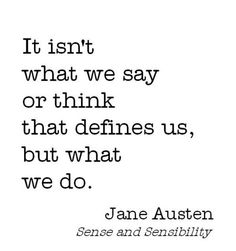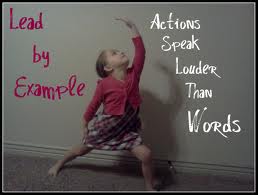Christmas traditions from around the world
[gap height=”15″]
[gap height=”15″]
WHO and WHOM are two very commonly confused words. To be honest, most native speakers don’t even know how to use them properly 😀 I think this is a great info/comic explaining the proper usage of WHOM (and WHO). > http://theoatmeal.com/comics/who_vs_whom Enjoy and laugh a little!
Greeting means welcoming someone with particular words or a particular action.
When meeting people formally for the first time, we greet by shaking hands and saying “How do you do?” or “Pleased to meet you.”
“How do you do?” isn’t really a question, it just means “Hello”.
When young people meet informally they sometimes greet and say “Give me five!” and slap their hands together (high five).
Generally we do not greet by shaking hands with people we know well. We greet by just saying ‘hi’ or ‘hello’
Here are some expressions you can use to greet people.
Greeting
Hi, hello.
- Good morning, good afternoon, good evening.
- How are you?
- How are you doing?
- How do you do?
Responding to greeting
- Hi, hello.
- Good morning/Good afternoon/Good evening.
- I’m fine thank you (thanks)/Okey! Thank you (thanks)/Can’t complain/Not bad.
- How about you?/And you?
- How do you do?
When you greet someone and say:
“How do you do?“
this isn’t really a question, it just means “Hello”.
Many of my IELTS students make a point of studying their idioms and phrasal verbs, mostly as it’s a clear cut way to show fluency and develop a more natural and advanced way of speaking English. However, there is something else which can also help here. This is the use of colloquial pairs. You will surely all now about ‘pros and cons’ from learning how to speak about advantages and disadvantages, and this is indeed a colloquial pair, however what about others?
What is a colloquial pair? Well these are pairs of words that have a special significance, such as idioms or slang. You must take care not to put them in the wrong order however, as while these pairs may be understood in a reversed order, they will sound incorrect to a native speaker.
So, can I give you some examples? Well, I’m very ‘prim and proper’ about my colloquialpairs so I must make sure I use them correctly! I believe that ‘by and large’ these are phrases which are essential to add to your vocabulary if you want to speak like a native, and there is nothing we can do to change that! I’m afraid these rules are set ‘hard and fast’ and we can’t make any exceptions.
Why not look the other pairs up online and see if you can use them?
[gap height=”15″]
Contact Rachel today > http://www.italki.com/teacher/1394345
[gap height=”15″]
Thanksgiving is a very American holiday. It is also called Thanksgiving Day. It is celebrated on the fourth Thursday in November every year. It used to be a religious holiday to give thanks to God. There are two versions of the origins of this holiday. One is thanks for the early settlers arriving in America safely. On December the 4th, 1619, a group of English pioneers arrived at a place called Berkeley Hundred, in Virginia. The group made a promise that the day of their arrival should be a “day of thanksgiving” to God. The second version is the thanks given to Native Americans for teaching the pilgrims how to catch eels and grow corn in Plymouth, Massachusetts. In 1941, President Roosevelt made Thanksgiving a federal holiday.
The main event of any Thanksgiving is the Thanksgiving dinner. It is traditional to have baked or roasted turkey. This is usually accompanied with mashed potatoes, sweet potatoes, fall vegetables, cranberry sauce, and gravy. Pumpkin pie is the most commonly eaten dessert. The Thanksgiving holiday weekend is one of the busiest times of the year for traveling. It is a four-day or five-day weekend vacation for most schools and colleges, and many businesses and government workers get three or four days off. Thanksgiving is also the unofficial signal for Christmas preparations to begin. Once Thanksgiving finishes, stores fill their shelves with Christmas goods. It is also a bad time to be a turkey.
[gap height=”15″]
Some of my students have a particularly hard time understanding modal verbs. Since I teach a lot of Italians I have become familiar with some language work for Italian students of English, specifically that of John Peter Sloan. However, he explains his ‘methods’ in Italian, obviously! So for the purpose of all other students, who don’t speak Italian, here is the translation. It’s not my idea, it’s his. I want to make that clear, but it’s a very good idea indeed and works wonders for making modals easier to understand and use.
The idea is that you think of modal verbs with percentages that show to what degree the action is likely, possible or probable. Then you simply use the relevant modal according to the result.
For example:
could 35%
may / might 50%
have to 75%
must 90%
should = the only exception, no percentage here as it is a matter of advice… think of someone with a wagging finger, tutting at you when you use this… ‘You SHOULD stop smoking!’
So… the process:
Try it… it works!
[gap height=”15″]
Contact Rachel today > http://www.italki.com/teacher/1394345
[gap height=”15″]
Brian speaks good English, but he doesn’t speak Spanish very well. (correct)
Brian speaks well English, but he doesn’t speak Spanish very good. (incorrect)
My brother did well on the English test. (correct)
My brother did good on the English test. (incorrect!)
Do you think I’m doing well at school? (correct)
Do you think I’m doing good at school? (incorrect!)
After linking verbs such as be, taste, sound, smell, look, seem, appear we use the adjective “good” as we are describing the subject of the sentence, not the action of the verb:
The concert last night wasn’t very good.
If the food tastes good, children will eat it.
Your idea sounds good and if it works would be great.
It always smells good after the rain.
The house looks good outside.
After the linking verbs “be“, “feel“, “look” we can also use “well” as an adjective meaning “healthy“:
I am well. / I feel well. / I’m feeling well. (refers to physical state, health)
I am good. / I feel good. / I’m feeling good. (refers rather to emotional than physical state)
Jane didn’t look well last night. (well = refers to heath)
The new dress looks really good on you. (good = refers to appearance)
Note: In the USA (conversational English) you can hear a lot of people answer “I’m good.” in response to “How are you?” and it is very popular among young generation.


[gap height=”15″]
[gap height=”15″]